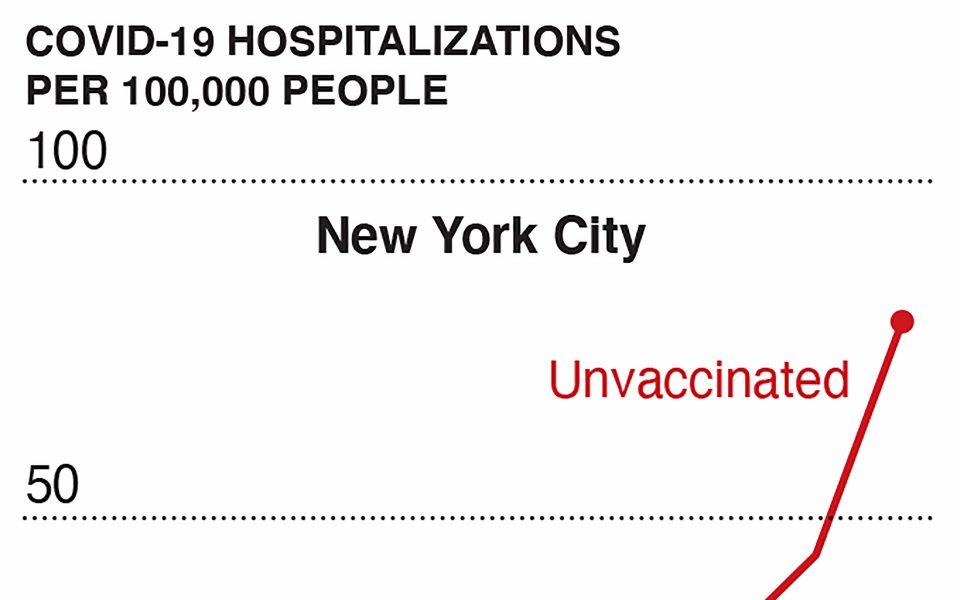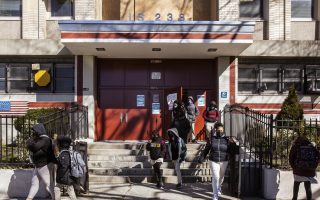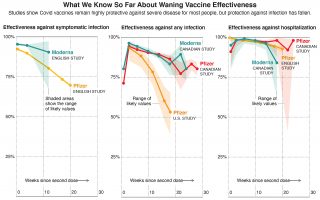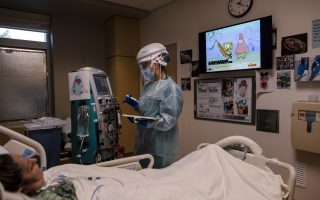Early data hints at Omicron’s potential toll across America

The extremely transmissible omicron variant is spreading quickly across the United States, making up a vast majority of U.S. cases after becoming dominant in the week before Christmas. The Centers for Disease Control and Prevention has said that it is still too soon to predict the full effect omicron could have on deaths and illness across the country. But data in some of the earliest-hit cities are beginning to show what the future could hold.
Deaths Follow Cases Upward, but Not Quite as Fast
In New York City, Boston and Chicago — cities with some of the country’s earliest omicron surges — deaths have followed cases at a slightly reduced scale than in previous peaks. But because of the extraordinarily high case count, even a proportionally lower death toll from the current case curve in the United States could be devastating.
Surge in Patients Can Overwhelm Hospitals
In early-hit cities, hospitals are seeing more patients testing positive for COVID than at any time last year. Because of the sheer infectiousness of the omicron variant, many who arrive at the hospital for other ailments test positive for the coronavirus. Some doctors have also said that patients who do have COVID as a primary diagnosis are faring better than during previous waves.
Even so, the number of COVID patients who need intensive care or mechanical ventilation is approaching levels not seen since last winter. And the sheer number of patients is overwhelming to hospitals, where staffing shortages are putting health care workers under immense strain.
Health care workers were already quitting their jobs in record numbers before the omicron wave. Now, many more are out sick with the hugely transmissible variant. With fewer staff members available to care for them, even a smaller number of patients can overwhelm emergency departments and intensive care units.
Wide Vaccination Gap in Hospitalizations
Since vaccines became available, those who are vaccinated have been far less likely to be hospitalized with severe COVID than those who are unvaccinated. Early data from New York City shows that the vaccination gap in hospitalizations became even wider during the first weeks of the city’s omicron surge.
Vaccinated patients are more likely to experience milder disease, doctors have said, and a vast majority of omicron patients who require intensive care are unvaccinated or have severely compromised immune systems.
Unvaccinated older people are particularly vulnerable to severe illness from COVID. About 12% of people in the United States ages 65 and older are not fully vaccinated, according to CDC data.
Many parts of the country where that rate is estimated to be highest are also places where surges fueled by the omicron variant have not yet begun or are only just beginning. Those places include parts of the Midwest and the Mountain West and more-rural areas across the country.
[This article originally appeared in The New York Times.]






